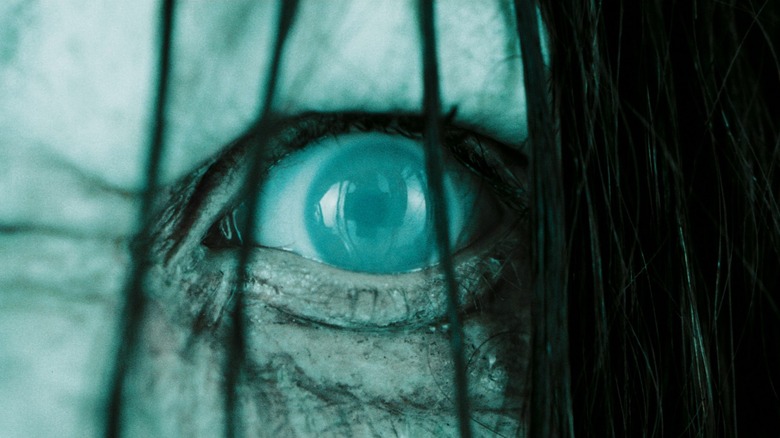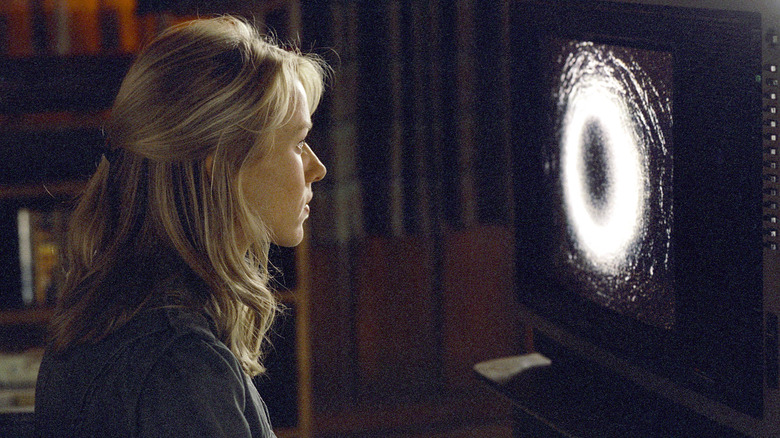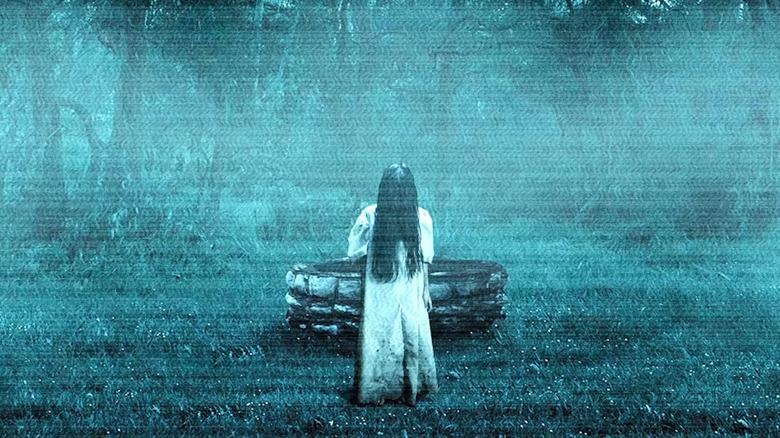The Haunted History Of The Lighthouse From The Ring
We may receive a commission on purchases made from links.
The "Ring" series is one of the more unexpectedly expansive in contemporary horror movie history. It started in 1991 with the publication of Koji Suzuki's Japanese novel "Ring," which expanded into a full six-book series by 2013. In 1998, Hideo Nakata adapted "Ring" into a feature film which spawned a complicated continuity-reshuffling string of sequels. "Rasen" (1998) based on the Suzuki novel, was not a hit, so the series was rebooted in 1999 with "Ring 2," and a prequel "Ring 0: Birthday" in 2000. The "Rasen" fans were treated to a re-visitation to the 1998 timeline in 2012 with "Sadako 3D" and its sequel "Sadako 3D 2" in 2013. But THEN the original timeline tried to repurpose things AGAIN with its own "Sadako" in 2019. This is nothing to say of the 1999 "Ring: The Final Chapter" TV miniseries, the one-season "Rasen" TV series, the series of manga adaptations, and the convoluted crossover film with the "Grudge" series ("Sadako vs. Kayako" came out in 2016).
There were also several remakes outside of Japan, including a Korean film called "The Ring Virus" (1999), and, perhaps best known to American audiences, the 2002 remake by director Gore Verbinski. And even the 2002 remake was followed by three sequels: The short film "Rings" (2005), "The Ring Two" (also 2005), and a feature-length film also called "Rings" (2017).
Now that none of us are confused, let's take a look at that lighthouse.
The Lighthouse
The plot of the "Ring" series entire is far too convoluted to get into here, but the 2002 film is pretty easy to sum up: A group of teenagers gather to watch a videocassette that is supposedly haunted; story goes that if you watch it, you receive a telephone call wherein a ghostly voice whispers "seven days." A week later, you die. This very thing happens to one of the teens, and her aunt, a reporter named Rachel (Naomi Watts) begins investigating the tape. The cassette contains a phantasmagoric images straight out of a Mark Romanek music video (a floating chair, a broken fingernail, a dying horse), but also a few palpable real-world hints as to where it might have been filmed, including a mysterious lighthouse.
The lighthouse, Rachel will eventually discover, is located in Washington state, in a fictional place called Moesko Island. Rachel finds that a young girl named Samara (Daveigh Chase) once lived there, and that Samara had mysterious supernatural powers including psychic photography abilities. It may be her ghost that's haunting the videocassette.
In the run-up to the release of "The Ring," a MoeskoIslandLighthouse.com website was launched, touting the lighthouse's reality and presenting the events of the "The Ring" as fact. Sadly, this clever marketing gimmick has since been taken down, but the lighthouse was — like many lighthouses — distant and forbidding. Beautiful, and somehow terrifying. It turns out the real story of the lighthouse where "The Ring" was filmed may be just as terrifying.
The Real Lighthouse
"The Ring" is set in Washington, but the lighthouse on Moesko Island is, in reality, the Yaquina Head Lighthouse located in Newport, Oregon. The Yaquina Head Lighthouse, at 93 feet, is the tallest in the state, and was first lit on August 20, 1873. Over the years, all lighthouses seem to accumulate ghost stories — while constructed for the safety of ships at sea, lighthouses are, after all, deeply spooky. Yaquina Head has two notable ghost stories attached to it, each connected to a real death.
When Yaquina Head was first being constructed, one of the workers — unnamed by history — fell to his death in between the inner and outer walls of the lighthouse. Story goes that it was too difficult to retrieve his body from the chasm, so the other workers just had to leave him there. His bones are still in that lighthouse to this very day. This story, sadly, has not been confirmed, and there is no official record of a dead construction worker from the 1870s.
The other ghost story sounds more plausible. In 1920, the head lighthouse keeper, named Smith, had to leave the lighthouse for an unknown reason and left another lighthouse keeper, named Higgins, in charge. Also in the lighthouse was a keeper named Frank Story, who was to assist Higgins. Higgins and Story were alone in the lighthouse when Higgins became suddenly ill. Higgins' illness would advance quickly and he would eventually die. When Smith returned, seeing the lighthouse was not lit, he found not only that Higgins was dead, but that Frank Story was drunk to the point of incoherence. Story, when he sobered up, was wracked by guilt and became convinced that Higgins' ghost would some back to haunt him, and began taking his pet bulldog to work as a precaution. I guess, in Story's mind, a bulldog was protection from ghosts.
Some research revealed, however, that this story about Story is not true. While there were real people named Smith, Higgins, and Frank Story who worked at the Yaquina Head Lighthouse, none of them worked together. Indeed, Higgins was tracked down, and he retired from lighthouse keeping in 1920 and returned home to live with his mother in Portland. Frank Story didn't start working at the lighthouse until several years later.
There is at least one confirmed death at the lighthouse, and it occurred in 1921 when the keeper died of a heart attack.
Tours of the Yaquina Head Lighthouse are currently closed, due to Covid-19.


